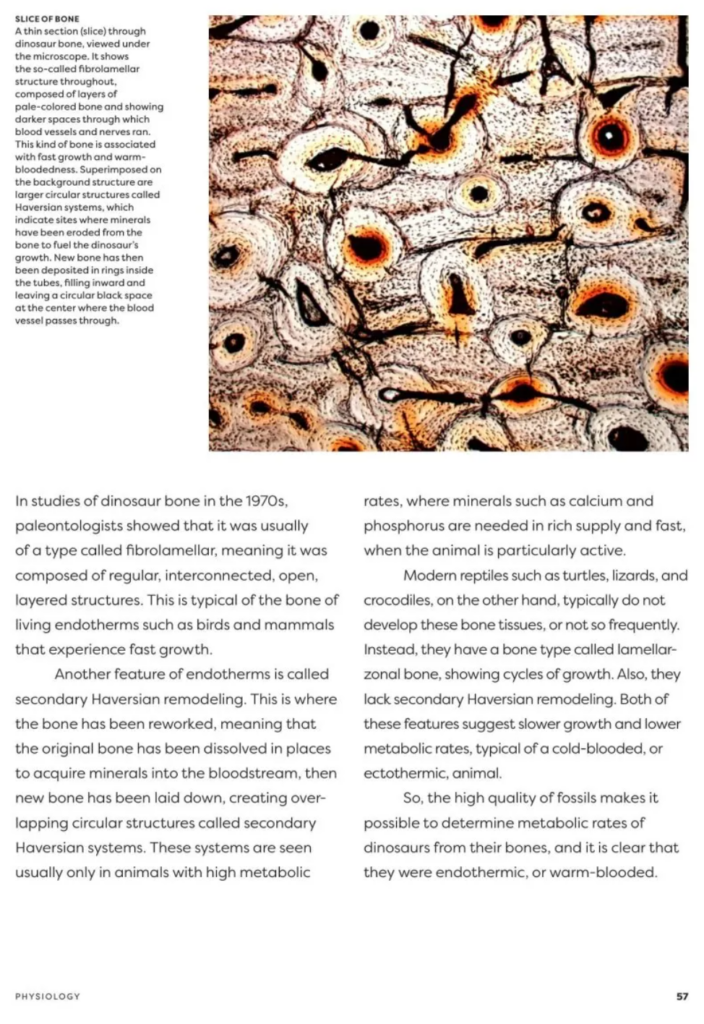**** Handsomely illustrated and accessible

Reconstructing how dinosaurs behaved from just their fossilised bones might seem like science fiction but is very much science fact. In Dinosaur Behavior: An Illustrated Guide, veteran palaeontology professor Michael J. Benton joins forces with palaeoartist Bob Nicholls to do what it says on the tin: write a richly illustrated introductory book on dinosaur behaviour that is well-suited for novices.
In Dinosaur Behaviour, Benton takes the reader through five main topics: physiology (which sets the pace for everything else), locomotion, senses and intelligence, feeding, and social behaviour (which includes courtship, reproduction, parental care, and communication). One or several ‘forensics’ boxes in each chapter introduce the basic gist of certain methods.
Reading through this book, it becomes abundantly clear that our understanding of dinosaur behaviour relies on two approaches. Though Benton does not mention it as explicitly as in his previous book The Dinosaurs Rediscovered, the first of these is new high-tech toys and tools. Examples include computed tomography (CT) scanners, normally used in hospitals, to make detailed X-ray scans of fossilised brains (so-called endocasts) and so determine brain anatomy. Or finite element analysis normally used in engineering to model forces and stresses on jaws and teeth and so determine e.g. bite force. The second approach is ‘old-fashioned’ comparative anatomy and ethology: it pays to have a good knowledge of natural history when you are a palaeontologist. One example is the histological study of fossil dinosaur bones. Cutting thin bone sections and examining these under a microscope shows that some dinosaurs closely resemble mammals and birds, supporting the idea that smaller species were endotherms (‘warm-blooded’, i.e. generating their own body heat). Or take the microscopic study of melanosomes (pigment-containing organelles) in fossil feathers to determine colour in life. A final example is the comparison of footprints made by modern running birds with fossil tracks to determine things such as gait and running speed.

If you are well-versed in (popular) palaeontology, much of what is presented here will be familiar. Even so, I picked up interesting titbits. One example is a recent study of Psittacosaurus that describes a cloaca, the multipurpose orifice also seen in birds where the digestive, urinary, and reproductive tracts all open to the outside world. This suggests that dinosaur sex, for at least some species, was a matter of the appropriately named ‘cloacal kiss’ rather than the brandishing of reptilian genitals. Other insights fell into the embarrassing ‘I should have known this’ category. We tend to think of walking on two legs as something advanced because our mammalian ancestors walked on all fours, but for dinosaurs, it was the reverse; they started out bipedal and quadrupedality only evolved later in e.g. the large sauropods. Particularly interesting is the study by Kat Schroeder and colleagues who looked at fossil communities of theropods and noticed a so-called carnivore gap: there is a lack of medium-sized ones in the fossil record, even though there are medium-sized herbivores. One explanation could be that dinosaur eggs had an upper size limit, meaning that young carnivores hatched small and had an awful lot of growing to do. As they did, ‘they passed through a whole range of feeding modes, each step along the way acting like a different species’ (p. 137), effectively plugging the ecological niche of medium-sized carnivores.
Despite the broad range of topics, there are some curious omissions. The chapter on feeding e.g. discusses jaws, teeth, and the use of isotopes to determine diet, but not microwear analysis of teeth. What I found most surprising is that Benton does not introduce the concept of trace fossils or ichnology, their study. Yet, examples such as trackways (some possibly showing long-distance migrations), coprolites (fossil poop), and nests are all discussed here. Another surprising omission is that the two-page bibliography does not include most studies mentioned in the text, even though it references other technical articles.

Dinosaur Behavior is mostly very suitable for readers with little to no background in palaeontology. Benton explains even basic terminology (physiology, cannibalism) as he goes, though there is the occasional curveball. One example is the morphospace diagram showing a principal component analysis on page 131, which, I hope those with a background in statistics will agree, is a rather abstract way of visualizing data that requires a bit more explanation than is given here. Though the book is published by Princeton University Press, it has been produced by UniPress Books who can be considered the spiritual successor to popular science publisher Ivy Press. What this means is that information is accessibly presented in bite-sized sections on one or several page spreads, with long sections further divided using subheadings. The downside is that this restricts how thoroughly topics can be explored. Leafing through e.g. Naish & Barrett’s Dinosaurs: How They Lived and Evolved shows more nuance in its chapter on behaviour.
Finally, I have to mention the excellent colour and black-and-white artwork by Bob Nicholls that livens up the text. I loved the drawing of courtship in Confusiusornis on pages 168–169. Despite the overlap in topic, this is all-new artwork compared to Locked in Time. Other diagrams have all been carefully designed or redrawn, using colours where appropriate. The only design element that did not work for me was the choice of sans-serif font which made e.g. the letters ‘a’ and ‘o’ hard to tell apart.
Serious palaeontology buffs might find the contents here somewhat superficial, but overall, this is a handsomely illustrated book that offers an accessible introduction suitable for novices and possibly even curious high-school pupils. It would also make for a great gift.
Dinosaur Behaviour: An Illustrated Guide is available from our online bookstore.






